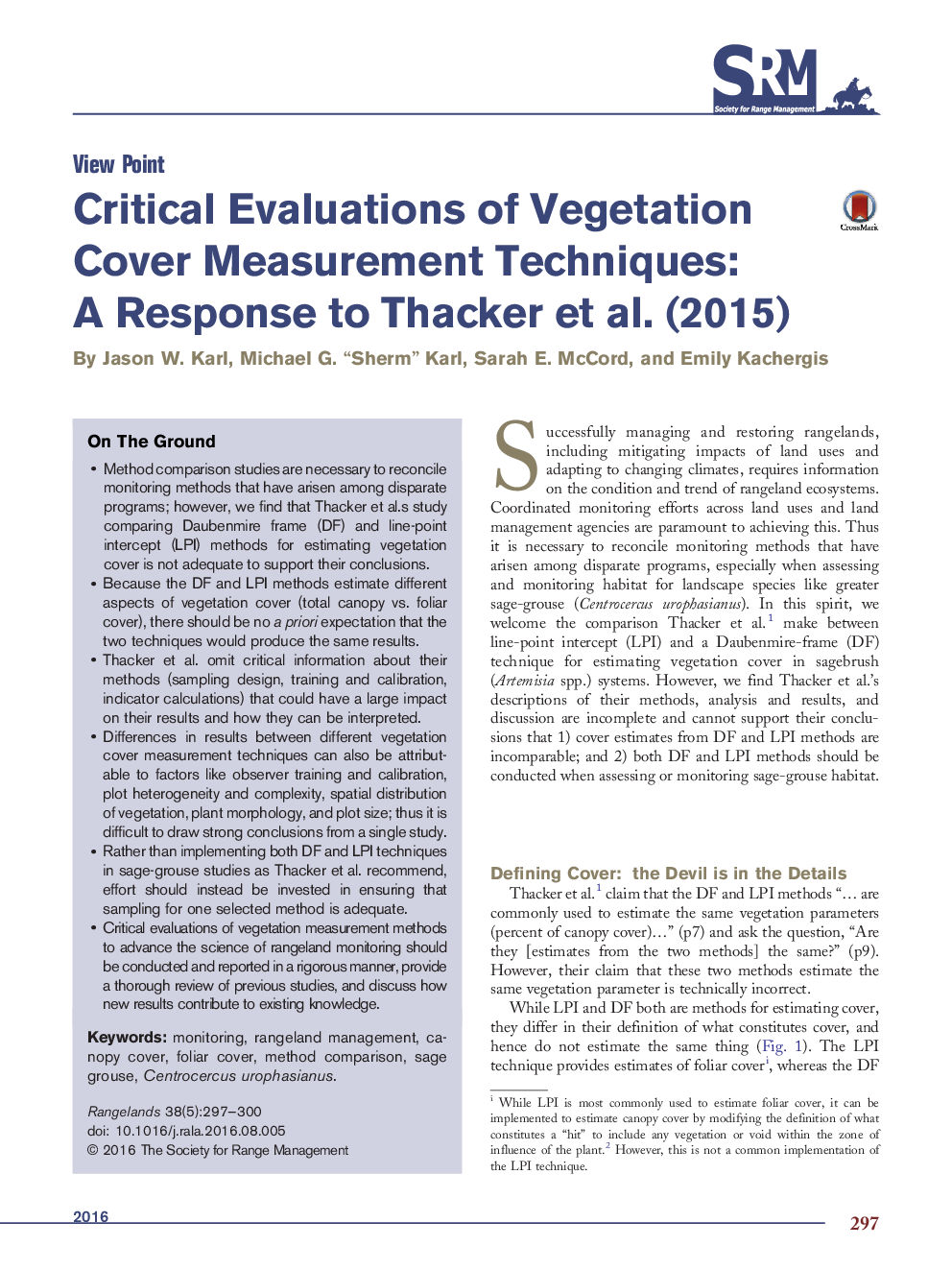| Article ID | Journal | Published Year | Pages | File Type |
|---|---|---|---|---|
| 5745357 | Rangelands | 2016 | 4 Pages |
Abstract
On The Ground
- Method comparison studies are necessary to reconcile monitoring methods that have arisen among disparate programs; however, we find that Thacker et al.'s study comparing Daubenmire frame (DF) and line-point intercept (LPI) methods for estimating vegetation cover is not adequate to support their conclusions.
- Because the DF and LPI methods estimate different aspects of vegetation cover (total canopy vs. foliar cover), there should be no a priori expectation that the two techniques would produce the same results.
- Thacker et al. omit critical information about their methods (sampling design, training and calibration, indicator calculations) that could have a large impact on their results and how they can be interpreted.
- Differences in results between different vegetation cover measurement techniques can also be attributable to factors like observer training and calibration, plot heterogeneity and complexity, spatial distribution of vegetation, plant morphology, and plot size; thus it is difficult to draw strong conclusions from a single study.
- Rather than implementing both DF and LPI techniques in sage-grouse studies as Thacker et al. recommend, effort should instead be invested in ensuring that sampling for one selected method is adequate.
- Critical evaluations of vegetation measurement methods to advance the science of rangeland monitoring should be conducted and reported in a rigorous manner, provide a thorough review of previous studies, and discuss how new results contribute to existing knowledge.
- Method comparison studies are necessary to reconcile monitoring methods that have arisen among disparate programs; however, we find that Thacker et al.'s study comparing Daubenmire frame (DF) and line-point intercept (LPI) methods for estimating vegetation cover is not adequate to support their conclusions.
- Because the DF and LPI methods estimate different aspects of vegetation cover (total canopy vs. foliar cover), there should be no a priori expectation that the two techniques would produce the same results.
- Thacker et al. omit critical information about their methods (sampling design, training and calibration, indicator calculations) that could have a large impact on their results and how they can be interpreted.
- Differences in results between different vegetation cover measurement techniques can also be attributable to factors like observer training and calibration, plot heterogeneity and complexity, spatial distribution of vegetation, plant morphology, and plot size; thus it is difficult to draw strong conclusions from a single study.
- Rather than implementing both DF and LPI techniques in sage-grouse studies as Thacker et al. recommend, effort should instead be invested in ensuring that sampling for one selected method is adequate.
- Critical evaluations of vegetation measurement methods to advance the science of rangeland monitoring should be conducted and reported in a rigorous manner, provide a thorough review of previous studies, and discuss how new results contribute to existing knowledge.
Keywords
Related Topics
Life Sciences
Agricultural and Biological Sciences
Agricultural and Biological Sciences (General)
Authors
Jason W. Karl, Michael G. “Sherm” Karl, Sarah E. McCord, Emily Kachergis,
